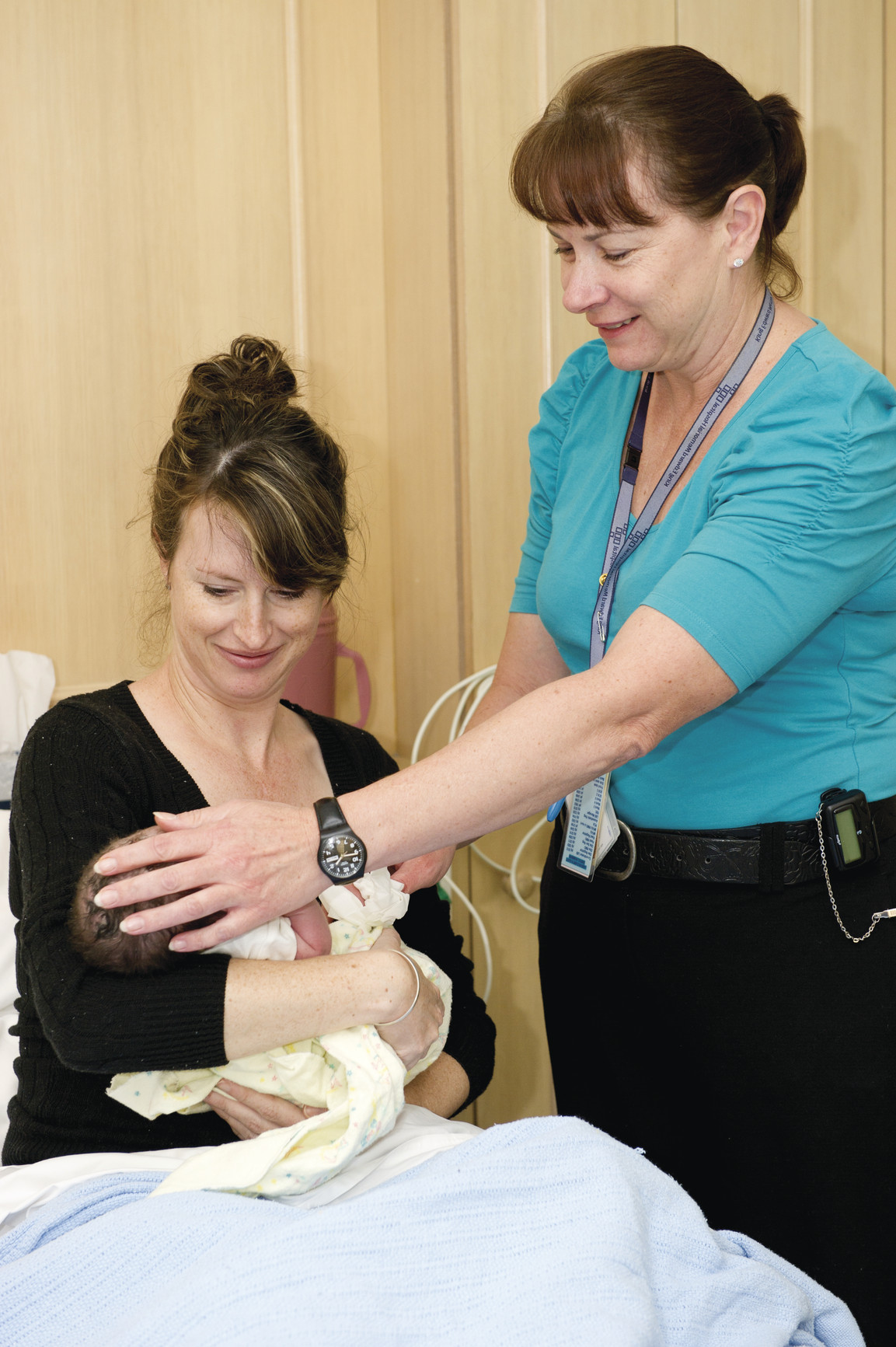Key messages for maternity staff members in managing falls risk
 Antenatal and postnatal women and newborns can be at risk of falling whist in maternity units.
Antenatal and postnatal women and newborns can be at risk of falling whist in maternity units.
Managing falls risk in the maternity setting has received minimal attention and has not been well documented.
Women have an increased short-term falls risk during labour or following vaginal or caesarean birth, especially during ambulation.
Newborn falls in maternity units are associated with maternal sedation, and many falls occur when a neonate rolls from the arms of a sleeping parent.
Traditional falls risk screening tools do not address the unique characteristics experienced by women in the immediate pre and post partum period.
All maternity patients should have a falls screening assessment completed:
- on admission to the ward
- if their clinical condition changes.
If any of the answers to the screening tool are yes then an assessment form should be completed. This will be used to:
- ascertain the reason for the falls risk
- put a management plan in place to reduce the risk of falling.
Risk factors for falls in maternity patients
Antenatal falls risks in women can include:
- pre-existing medical conditions
- seizure disorders
- ante partum haemorrhage
- mobility problems
- developmental delay
- mental health issues.
Intrapartum falls risks in women can include:
- epidural analgesia
- opioid analgesia
- severe fatigue
- falls and trip hazards such as:
- cardiotocograph (CTG) cables
- fluid spills
- drip stands.
Postnatal falls risks include:
- tiredness following birth
- post caesarean section
- ongoing effects of anaesthesia, for example epidurals (weakness, or lack of sensation in lower extremities)
- medications (affecting the level on consciousness, balance, cognition and sleep patterns)
- blood loss following postpartum haemorrhage (PPH)
- hypotension.
Interventions to prevent falls in maternity patients
Minimum standards for all maternity patients
- Ensure the bed brakes are on and the bed is the correct height for the woman.
- Encourage women to wear non-slip footwear when mobilising.
- Provide instruction on how to use the call bell to obtain assistance if required.
- Educate the woman, and her partner, about the specific falls risks and safety issues in the unit, for example birth suite or postnatal ward.
- Remove obstacles and clutter from the room.
Interventions for maternity patients at risk of falling (in addition to the minimum standards)
- Remind women to call for assistance and wait for staff to help them to the bathroom if they wish to mobilise or they need to get their baby out of its cot.
- Place call bells, bedside tables, water jugs and frequently used objects within easy reach (particularly women with epidurals, labouring women with intravenous lines and CTG monitoring, post caesarean section or PPH).
- 1:1 midwifery care should be provided to women in labour who are at risk of falling. All women and their partners should be reminded not to attempt mobilisation without staff assistance.
- If the woman is experiencing any ongoing mobilisation issues refer to physiotherapy or occupational therapy.
Parental education
Educate new parents about how to keep their baby safe from falling.
- Address safety issues with activities, such as changing nappies and bathing babies, as these are potential falls risk situations.
- Highlight the importance of putting their baby to sleep on their back from birth in their own cot next to the adult bed.
- Provide advice about the risk of falling asleep while holding their baby.
- Highlight the risks of walking around the maternity unit or hospital with their baby in their arms and advise them to use the wheeled cot.
Screening tools
A falls risk screening tool for use in maternity patients is being developed by South Metropolitan Health Service.